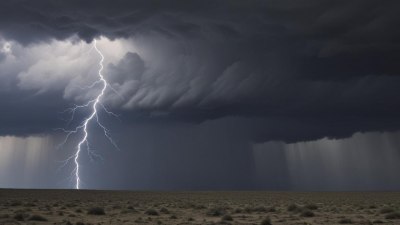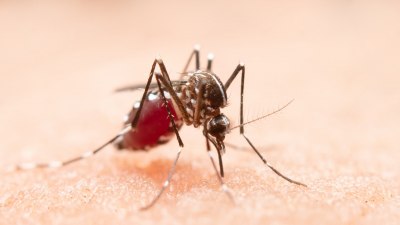What Causes a Sudden Temperature Drop
Explore the various factors contributing to sudden temperature drops and their impacts on weather patterns.

Image by Oleksandr Ryzhkov on Freepik
A sudden temperature drop can be an intriguing phenomenon, often leaving people baffled and curious about its causes. Temperature changes can be abrupt and unsettling, especially when they occur without warning. Understanding the various factors that contribute to such sudden drops in temperature is vital for both casual observers of weather and those who study meteorology. In this article, we will explore some common causes of sudden temperature drops, their implications, and how they affect our environment.
Understanding Temperature Changes
Temperature is a measure of the heat present in the atmosphere, influenced by various factors including the Sun's energy, geographical features, and atmospheric conditions. It is essential to understand that temperature is not static and can fluctuate significantly based on several environmental and meteorological factors. These fluctuations can manifest as brief moments of cold that catch people off guard, particularly in regions where weather patterns are variable.
Cold Fronts
One of the most common causes of a sudden temperature drop is the passage of a cold front. A cold front occurs when a mass of cooler air moves in and displaces warmer air. The transition can be rapid, leading to a significant drop in temperature over a short period. Typically, as a cold front approaches, temperatures may begin to rise slightly due to the warm air being pushed upward. However, once the front passes, the colder air settles in, resulting in a noticeable decrease in temperature that can be several degrees in just hours.
Geographic Influences
The geographic features of a region also play a critical role in temperature changes. Areas with varying topography such as mountains and valleys can experience abrupt temperature shifts. For instance, in mountainous regions, valley areas can quickly cool down at night due to radiational cooling, as the heat escapes into the atmosphere. Furthermore, elevation has a significant impact on temperature, with higher elevations typically experiencing cooler temperatures than lower areas, which can also contribute to rapid drops in temperature based on the time of day.
Seasonal Changes
Seasonal transitions can also result in sudden temperature drops. As winter approaches, for example, the shift from longer, warmer days to shorter, cooler days can occur quickly. This is particularly true in regions that experience significant seasonal changes. In the spring and fall, temperature drops can be equally abrupt, influenced by the jet stream's movement, which can shift rapidly and lead to cold air masses moving down from polar regions.
Weather Systems
Large-scale weather systems, such as low-pressure systems, can result in abrupt temperature changes. When a low-pressure system moves into an area, it can bring changes in wind direction and speed, which can lead to a significant influx of colder air. These systems are often associated with storms, which can exacerbate the temperature drop by increasing precipitation and cloud cover, thus blocking out solar heating during the day.
Effects of Urbanization
Urban areas, with their unique landscapes and heat-absorbing materials, can influence local weather patterns, including temperature drops. The heat island effect, where urban regions are significantly warmer than their rural surroundings, can lead to sudden temperature differences when cooler air masses move into these areas. The sudden contrast can lead to a noticeable drop in temperature, especially when winds are calm and local thermal conditions shift.
Atmospheric Changes
Changes in atmospheric pressure can also result in temperature drops. The atmosphere is constantly in motion, and variations in pressure can shift air masses. Such movements can create fronts that lead to quick temperature drops. For example, following the passage of a warm front, a cold front may quickly follow, resulting in a rapid decrease in temperature as the warm air is replaced with colder air. Additionally, phenomena such as inversions, where a layer of warm air traps cooler air close to the ground, can lead to significant temperature drops as the warm air dissipates.
Weather Patterns and Climate Change
Climate change and its associated impacts can lead to alterations in established weather patterns, potentially resulting in unexpected temperature drops. As global temperatures rise, the behavior of cold air masses and warm air currents can change, leading to new weather phenomena that may include sudden drops in temperature. Understanding these patterns is crucial for predicting weather events and preparing for the impacts they may deliver.
Implications on Agriculture
Sudden temperature drops can have significant implications for agriculture. Crops that are sensitive to temperature changes can be adversely affected, resulting in damage or loss. For farmers and agricultural professionals, monitoring temperature trends is essential for efficient crop management. The sudden onset of a cold snap can catch growers off guard, leading to the need for protective measures such as row covers or heater systems to safeguard crops from the damaging effects of frost.
Health Risks Associated with Sudden Temperature Drops
Moving beyond agriculture, sudden temperature drops can also pose health risks, particularly for vulnerable populations such as the elderly and those with pre-existing health conditions. Rapid changes in temperature can lead to hypothermia and other cold-related illnesses when individuals are unprepared or unable to regulate their exposure to the cold effectively. The risk of respiratory issues can also increase, as colder air can exacerbate pre-existing conditions. Public health advisories are often disseminated when sudden temperature changes are forecasted, emphasizing the need for residents to take appropriate precautions.
Preparation and Adaptation
To deal with sudden temperature drops effectively, preparation and adaptation are essential. Individuals should stay informed about weather forecasts, particularly during seasonal transitions or when extreme weather events are expected. Having appropriate clothing and heating systems in place can go a long way in keeping people comfortable and safe when temperatures unexpectedly plummet. Communities can also invest in infrastructure that helps mitigate the effects of sudden cold spells, such as insulation in buildings and resources for emergency services on standby.
A sudden drop in temperature can be attributed to a multitude of factors, including cold fronts, geographic influences, weather systems, and more. Understanding these causes equips us with the knowledge to better prepare for and adapt to changing weather patterns, ensuring we mitigate the potential risks associated with these rapid temperature fluctuations. As climate change continues to alter our weather systems, awareness of how and why sudden temperature drops occur will be increasingly crucial for communities worldwide.











